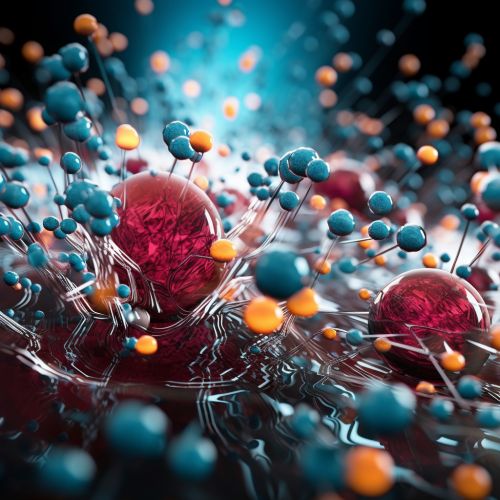Nanotechnology in medical imaging
Introduction
Nanotechnology is the manipulation of matter on an atomic, molecular, and supramolecular scale. In the field of medical imaging, nanotechnology has shown significant potential in improving the sensitivity and specificity of imaging modalities. This article will delve into the application of nanotechnology in medical imaging, discussing its principles, applications, advantages, and challenges.
Principles of Nanotechnology in Medical Imaging
Nanotechnology involves the use of materials and devices with a functional organization on the nanometer scale. In medical imaging, nanotechnology is used to create nanoparticles that can be used as contrast agents or probes, enhancing the quality and specificity of the imaging output.


Nanoparticles used in medical imaging are typically designed to have properties such as high stability, biocompatibility, and the ability to target specific cells or tissues. They can be made from a variety of materials, including metals, semiconductors, or organic compounds, depending on the intended application.
Applications of Nanotechnology in Medical Imaging
Nanotechnology has found applications in various medical imaging modalities, including Magnetic Resonance Imaging (MRI), Computed Tomography (CT), Positron Emission Tomography (PET), and optical imaging.
Magnetic Resonance Imaging (MRI)
In MRI, nanoparticles can be used as contrast agents to enhance the visibility of certain tissues or pathologies. For example, iron oxide nanoparticles are commonly used as MRI contrast agents due to their superparamagnetic properties. They can be functionalized with specific ligands to target certain cells or tissues, improving the specificity of the imaging output.
Computed Tomography (CT)
In CT, nanoparticles made of high atomic number elements like gold or iodine can be used as contrast agents. These nanoparticles can absorb X-rays more effectively than the surrounding tissues, enhancing the contrast in the resulting images.
Positron Emission Tomography (PET)
In PET, radiolabeled nanoparticles can be used as probes to track the distribution of certain molecules in the body. This can be useful in studying the pharmacokinetics of drugs, or in imaging certain pathologies like tumors.
Optical Imaging
In optical imaging, nanoparticles can be used to enhance the contrast of images or to enable the imaging of specific molecules. For example, quantum dots, which are semiconductor nanoparticles, can emit light of specific wavelengths when excited, making them useful in fluorescence imaging.
Advantages of Nanotechnology in Medical Imaging
The use of nanotechnology in medical imaging offers several advantages over traditional imaging methods. These include:
- Improved sensitivity: Nanoparticles can enhance the contrast of images, making it easier to detect small changes in tissue properties or molecular concentrations.
- Increased specificity: Nanoparticles can be functionalized with specific ligands to target certain cells or tissues, improving the specificity of the imaging output.
- Multimodality imaging: Some nanoparticles can be used in multiple imaging modalities, allowing for simultaneous imaging of different tissue properties or molecular processes.
- Theranostics: Some nanoparticles can be used for both imaging and therapy, enabling the simultaneous diagnosis and treatment of diseases.
Challenges and Future Directions
Despite the promising potential of nanotechnology in medical imaging, there are several challenges that need to be addressed. These include the biocompatibility and toxicity of nanoparticles, the stability of nanoparticles in biological environments, and the regulatory hurdles associated with the clinical translation of nanoparticle-based imaging agents.
Future research in this field is likely to focus on addressing these challenges, as well as on developing new types of nanoparticles and imaging techniques. The ultimate goal is to create safe, effective, and affordable nanoparticle-based imaging agents that can improve the diagnosis and treatment of diseases.
